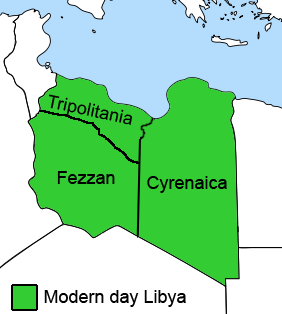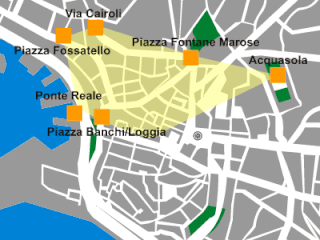
The Republic of Genoa was a medieval and early modern maritime republic from the years 1099 to 1797 in Liguria on the northwestern Italian coast. During the Late Middle Ages, it was a major commercial power in both the Mediterranean and Black Sea. Between the 16th and 17th centuries, it was one of the major financial centres in Europe.

Galata is the former name of the Karaköy neighbourhood in Istanbul, which is located at the northern shore of the Golden Horn. The district is connected to the historic Fatih district by several bridges that cross the Golden Horn, most notably the Galata Bridge. The medieval citadel of Galata was a colony of the Republic of Genoa between 1273 and 1453. The famous Galata Tower was built by the Genoese in 1348 at the northernmost and highest point of the citadel. Galata is now a quarter within the district of Beyoğlu in Istanbul.

Arap Mosque is a mosque in the Karaköy quarter of Istanbul, Turkey. The building was originally a Roman Catholic church erected in 1325 by the friars of the Dominican Order, near or above an earlier chapel dedicated to Saint Paul in 1233. Although the structure was altered during the Ottoman period, it is the only example of medieval religious Gothic architecture remaining in Istanbul.

Beyoğlu is a municipality and district of Istanbul Province, Turkey. Its area is 9 km2, and its population is 225,920 (2022). It is on the European side of Istanbul, Turkey, separated from the old city by the Golden Horn. It was known as the region of Pera surrounding the ancient coastal town Galata which faced Constantinople across the Horn. Beyoğlu continued to be named Pera during the Middle Ages and, in western languages, into the early 20th century.

This is a survey of the postage stamps and postal history of Tripolitania, now part of Libya.

The Genoa Metro is a light rapid transit system consisting of a single line that connects the centre of Genoa, Italy with the suburb of Rivarolo Ligure, to the north-west of the city centre. The service is currently managed by Azienda Mobilità e Trasporti (AMT), which provides public transport for the city of Genoa.

Albaro is an affluent residential neighbourhood of the Italian city of Genoa, located 3 kilometres (1.9 mi) east of the city centre. It was formerly an independent comune, named San Francesco d'Albaro, included in the city of Genoa in 1873. At present, together with the neighbourhoods of Foce and San Martino d'Albaro is part of the Genoa's city VIII Municipio.

The Lighthouse of Genoa, known as La Lanterna, is the main lighthouse serving the Port of Genoa. Besides being an important aid to night navigation in the vicinity, the tower serves as a symbol and a landmark for the city of Genoa. Rebuilt in its current shape in 1543 replacing the former lighthouse, it is the world's fourth oldest lighthouse, following the Tower of Hercules in A Coruña, Spain, Hook Head Lighthouse in Ireland, Kõpu Lighthouse, on the island of Hiiumaa, Estonia. Built of masonry, at 76 m (249 ft), it is constructed in two square portions, each one capped by a terrace. The whole structure is crowned by a lantern from which the light is shone.

The Genoesecolonies were a series of economic and trade posts in the Mediterranean and Black Seas. Some of them had been established directly under the patronage of the republican authorities to support the economy of the local merchants, while others originated as feudal possessions of Genoese nobles, or had been founded by powerful private institutions, such as the Bank of Saint George.
The following is a timeline of the history of the city of Genoa, Liguria, Italy.

Genoa is a city in and the capital of the Italian region of Liguria, and the sixth-largest city in Italy. In 2023, 558,745 people lived within the city's administrative limits. While its metropolitan city has 813,626 inhabitants, more than 1.5 million people live in the wider metropolitan area stretching along the Italian Riviera.

Maddalena is a neighbourhood in the old town of the Italian city of Genoa. It was one of the six sestieri of ancient Genoa. At present it is part of the Genoa's city Municipio I.

The Genoese navy was the naval contingent of the Republic of Genoa's military. From the 11th century onward the Genoese navy protected the interests of the republic and projected its power throughout the Mediterranean and Black Seas. It played a crucial role in the history of the republic as a thalassocracy and a maritime trading power.
Annalaura di Luggo is a multimedia artist and film-maker based in Naples.

The Galata - Museo del mare is a maritime museum in the Italian city of Genoa. It is the largest museum of its kind in the Mediterranean area and also one of the most modern in Italy. The museum is located on the grounds of the Porto Antico, in the Palazzo Galata in the Darsena district, where galleys were built in the Republic of Genoa era. It is close to downtown Genoa, the Port of Genoa, and within walking distance of Genova Principe train station and Darsena metro stop. It opened in 2004 as part of Genoa's 2004 European Capital of Culture celebration.
Marcello Baschenis was an Italian painter.

The Genoese School is a cultural and art movement developed and rooted, since the 1960s, in Genoa, Italy. It is mainly linked to the Italian "canzone d'autore".

The Palazzo Gerolamo Grimaldi also known as the palazzo della Meridiana is a building located in the salita di San Francesco at number 4 in the historical centre of Genoa, included on 13 July 2006 in the list of the forty-two palaces inscribed in the Rolli di Genova that became World Heritage by UNESCO on that date.

The Palazzo della Nuova Borsa Valori is a historical building in Genoa, located in Piazza De Ferrari, also known as the Palazzo della Borsa. Built by engineers Dario Carbone and Amedeo Pieragostini, its architecture recalls the Neo-16th century style, while the interiors, by Adolfo Coppedè, are inspired by the Liberty style.
Francesco Bosso was an Italian scenic designer and painter, best known for landscapes and floral still lifes. His daughter Maria was the mother of artist and designer Roberto Sambonet (1924–1995).
















